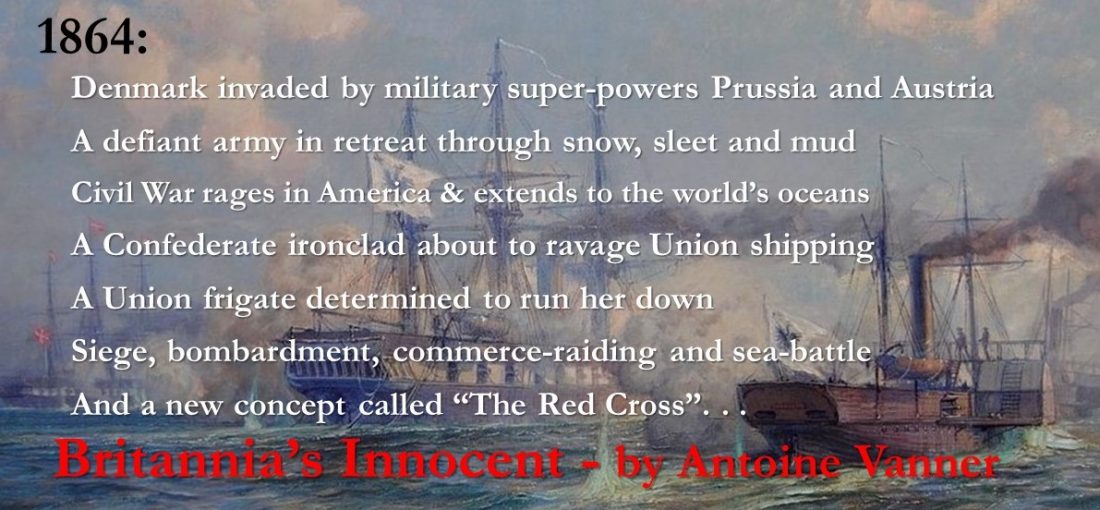2019 Retrospective: A Blog Miscellany
 Best wishes to you and yours for a Happy, Healthy and Successful 2020 and the decade thereafter from me, Antoine Vanner.
Best wishes to you and yours for a Happy, Healthy and Successful 2020 and the decade thereafter from me, Antoine Vanner.
Many thanks for your support and for the enjoyable discussions that my writing has so often triggered.
2019 was a busy year in the Dawlish Chronicles front, including publication of the eighth novel in the series – Britannia’s Innocent – not to mention a new free short story and over eighty blog articles (some divided over two or three postings). In case you’ve missed any I’ve selected a dozen of my personal favourites and hope that you’ll enjoy them if you missed them first time around, and may even enjoy them if it’s for a second! Here they are – click on each title to read the article
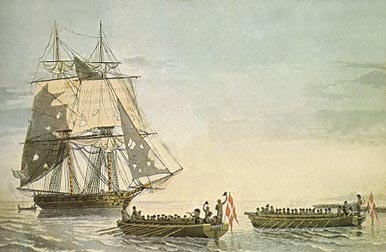 HMS Quebec off Nordeney, 1811
HMS Quebec off Nordeney, 1811
The small scale attack by a small Royal Navy force on enemy gunboats at the East Friesan Island of Norderney in 1811 was a desperate action straight out of the pages of naval fiction. This article tells about an unusual aspect of the naval war against Napoleon. It also has a sad postscript that relates to the British-American conflict of the War of 1812.
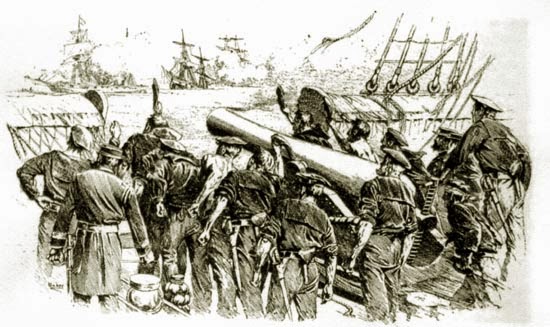 First American-Japanese naval battle
First American-Japanese naval battle
July 1863 was recognised both at the time and afterwards as the turning point of the American Civil War. Long and bitter fighting still lay ahead but the Union victory at Gettysburg in the first three days of the month, and the surrender of the Confederate fortress of Vicksburg in the 4th, ensured that the nation would ultimately be reunited. But in this same month, and on the far side of the world, an American warship was to fight the nation’s first battle with a foe which would become even more significant later….
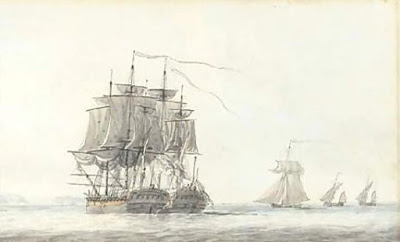 HMS Flora 1780 – the Carronade arrives
HMS Flora 1780 – the Carronade arrives
In 1780 the “Carronade”, a short smoothbore cast iron cannon, represented the cutting edge of contemporary weapons technology. Its introduction was to change the nature of warfare in the Age of Fighting Sail. The first demonstration of its potential was to occur in 1780 when the Royal Navy’s 36-gun frigate Flora encountered the French 36-gun frigate Nymphe…
 In the Dawn of Naval Aviation – HMS Ark Royal and HMS Argus
In the Dawn of Naval Aviation – HMS Ark Royal and HMS Argus
Britain’s Fleet Arm Museum at Yeovilton, Somerset, has a splendid collection not only of naval aircraft but of models of aircraft carriers from the earliest days. Two from the World War I period, HMS Ark Royal and HMS Argus, represent extreme ends of the spectrum of development that occurred in such a short time. Both proved of value in evolution of equipment, operations procedures and tactics, and went on to give valuable service in World War II. This article describes them and is illustrated with photographs taken in the museum.
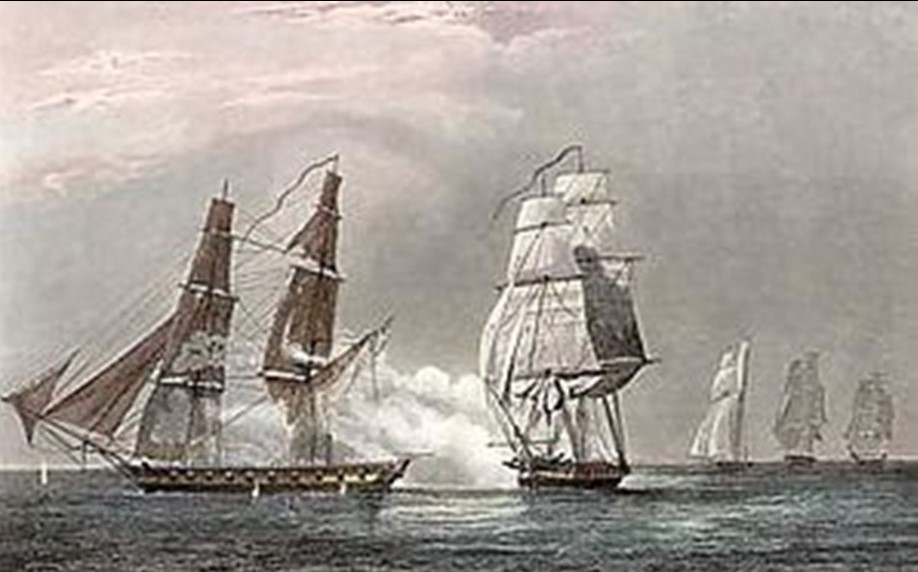 HMS Swallow & Mrs. Phelan, 1812
HMS Swallow & Mrs. Phelan, 1812
In 1812 the heavily-armed Brig HMS Swallow made a brilliant inshore raid close to the French port of Frejus. It earned her captain coveted “post rank” but the most unexpected heroes of the action were the ship’s purser (a position often little respected due to widespread suspicions of dishonesty) and the wife of a seaman. This lady, a Mars. Phelan, had given birth on board a scant three weeks previously, but this did not daunt her courage. And there is a sad postscript…
 HMS Thunderer 1879 – the end of muzzle-loaders
HMS Thunderer 1879 – the end of muzzle-loaders
The muzzle loading cannon dominated naval warfare from the age of Drake until the 19th Century. Ever larger cannon were developed in the 1870s, their loading facilitated by use of hydraulics. But in 1879 an explosion of the revolutionary new battleship HMS Thunderer brought this era to a dramatic end…
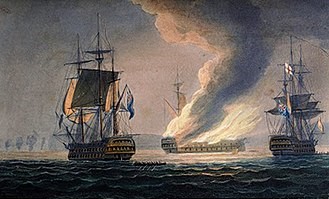 HMS Implacable at war with Russia – 1808 & 1809
HMS Implacable at war with Russia – 1808 & 1809
For almost five years, 1807 to 1812, Russia was an ally of the French Empire, albeit a less than enthusiastic one. Their final falling-out would lead to Napoleon’s appalling retreat from Moscow and, ultimately, to French troops camping on the Champs Élysées in Paris less than two years later. But while Russia was still France’s ally, the Royal Navy’s ‘74”, HMS Implacable, and other warships, were engaged in some very aggressive and daring operations against the Russian Navy in the Baltic.
 The Salvage of HMS Royal George 1782-1844
The Salvage of HMS Royal George 1782-1844
The disaster that overcame the line-of battle ship HMS Royal George in 1782, while anchored in calm water in sight of shore, was to have as strong an impact on the contemporary public mind as the loss of the RMS Titanic was to have one hundred and thirty years later. The tragedy was all the more terrible for the fact that it had been avoidable if the simplest of precautions had been taken – and without them over 900 men and women were to die. The sinking was not however the end of the story and her salvage, which was to be completed six decades later, was to be a courageous epic in itself and would make innovative use of new diving technology.
 The Imperial German Navy vs. Haiti
The Imperial German Navy vs. Haiti
On two occasions when Imperial Germany felt that its prestige had been injured by the poverty-stricken Republic of Haiti it had no hesitation in unleashing naval power to demand satisfaction. These confrontations were to be unequal in the extreme, but one was to trigger an act of insane heroism.
 Privateer action off Madagascar 1806
Privateer action off Madagascar 1806
Though mention of warfare in the Age of Fighting Sail so often conjures up images of major fleet actions such as Camperdown, The Nile, and Trafalgar, single-ship actions between small vessels represented the vast majority of combats at sea. One of the most remarkable of these – stranger than fiction indeed – occurred in the Indian Ocean, off Madagascar in 1806. It did not involve ships of the official British and French navies but rather two privateers – privately owned vessels which had been issued “letters of marque” by their governments and thereby authorised to wage war on their behalf.
 HMS Natal and the SS Persia – December 1915
HMS Natal and the SS Persia – December 1915
For all that it should have been a season of goodwill, the Christmas to New Year period of 1915, from December 24th to 31st, saw horrific losses at sea that are today largely forgotten except by descendants of the victims. An armoured cruiser, HMS Natal, and a liner, SS Persia, were the most notable – and largest – victims.
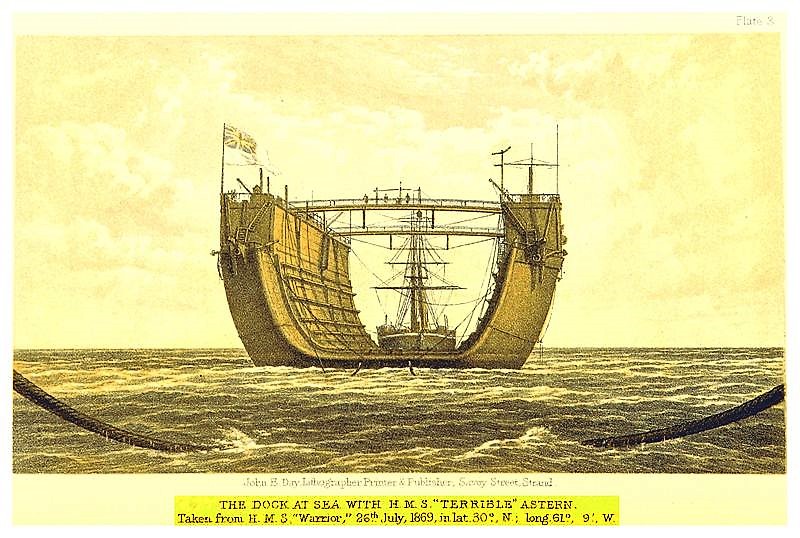 Bermuda’s Floating Dry Dock 1869
Bermuda’s Floating Dry Dock 1869
In the late 1860s the construction of a giant floating dock was one of the engineering wonders of the age. Perhaps even more impressive perhaps was the fact that this enormous structure was safely towed for some 4000 nautical miles from Britain to Bermuda, where it was to provide sterling survive for over three decades.
The New Dawlish Chronicles novel: Britannia’s Innocent
Available in Paperback and Kindle. It’s scoring 5-star reviews on Amazon.com
Typical Review, named “The most thoughtful Naval adventure series, ever.“
“Each of the Dawlish Chronicles is better than the last. Combines the action and adventure of Tom Clancy or Bernard Cornwell, with the sensibility of Henry James or Jack London. The hero perseveres in the face of adversity and remains true to his principles and evolving moral sensibilities: becoming more complete with each challenge. Not jingoistic, but a determined ethical man, who will fulfill his duty to the ends of the earth. I can’t wait for the next novel in this series! Thank you Mr Vanner for this fabulous hero placed so aptly into a backdrop of eminent Victorians.”
For more details, click below:
For amazon.com For amazon.co.uk For amazon.com.au
The Dawlish Chronicles – now up to eight volumes, and counting …
A sixth free short-story, Britannia’s Rescuers, set in 1875, is now available for download (with five others) to your Kindle. Access it by registering for the Dawlish Chronicles mailing list – just click on the banner below. You’ll be kept updated on new books and it facilitates e-mail contact between Antoine Vanner and his readers.

